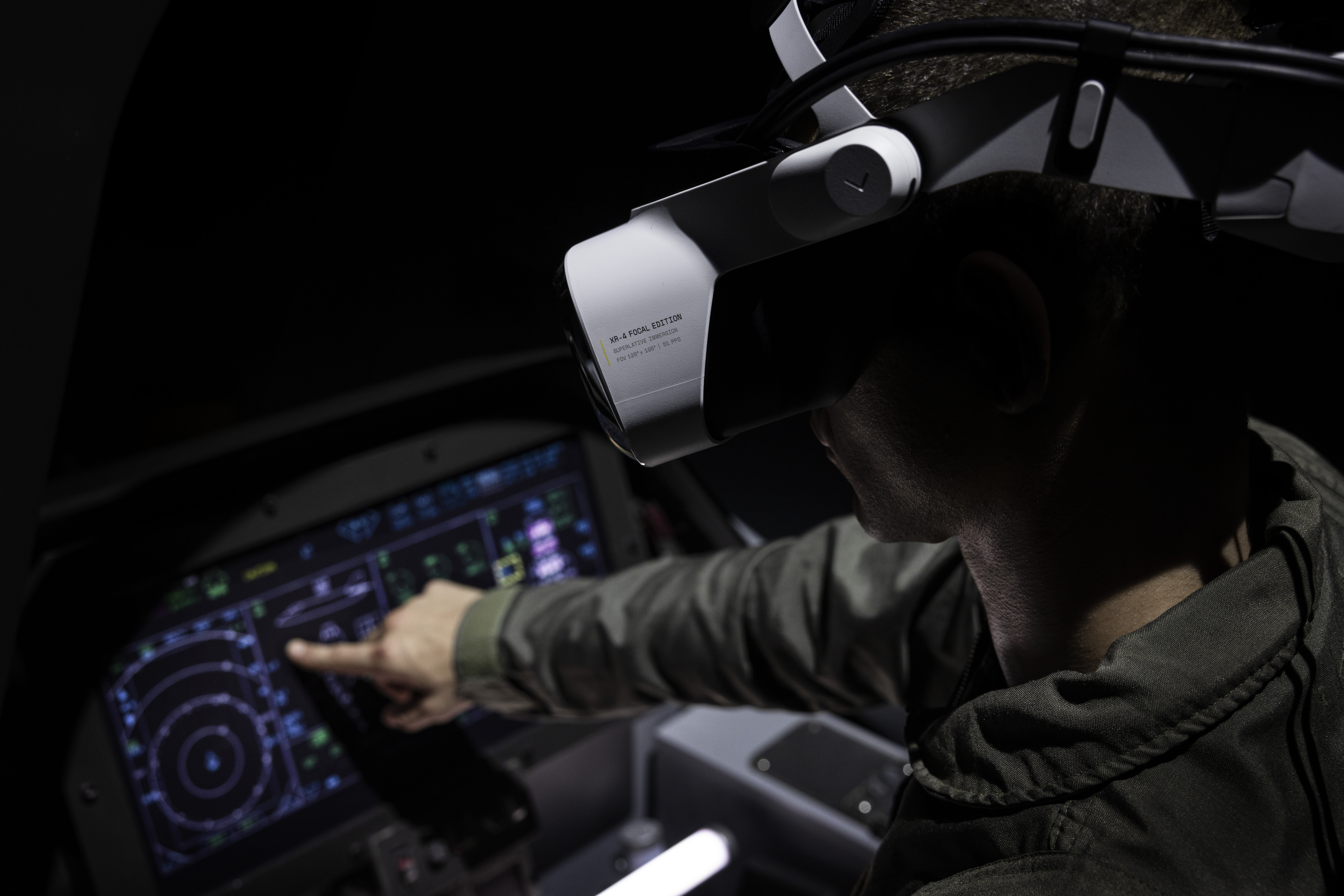 EMERGING TECH
EMERGING TECH
 EMERGING TECH
EMERGING TECH
 EMERGING TECH
EMERGING TECH
Finland-based virtual reality firm Varjo Technologies Oy launched the next generation of its high-fidelity mixed reality headsets today with the debut of its XR-4 series, which includes high-resolution displays, auto-focus cameras and new capabilities for industrial and enterprise applications.
Varjo is well-known for making some of the most advanced VR and MR headsets on the planet, featuring human-eye resolution and high-fidelity rendering capabilities. The XR-4 series is a family of “mixed reality” headsets, which means the headsets deliver photorealistic immersive experiences that blend computer-generated simulated objects with the real world.
The newly released XR-4 series features dual 4K by 4K resolution displays, enabling a human-eye resolution per eye at 51 pixels per degree, for about 28 million pixels in total, and providing a 50% wider field of view than the previous-generation device released by Varjo. In particular, the FOV extends more broadly vertically, allowing a view above and below, which means that once the headset is donned, headset wearers can see more without tilting their heads.
The headset also features advanced depth-sensing cameras with lidar, a laser ranging capability, that allows it to assist with mimicking the function of the human eye and coming as close to providing both virtual and mixed reality experiences that are nearly indistinguishable from natural sight.
Enterprise and industrial customers can get the XR-4, XR-4 Focal Edition or the XR-4 Secure Edition, which is designed for military and security-focused applications.
The Focal Edition has a specialized feature that allows it to go even further than normal mixed-reality headsets by including auto-focus cameras that mimic the natural ability of human eyes: the adjustment in focus when changing gaze.
“We’re kind of replicating the way human eyes work, as in, you see a thing close by you focus, they’re far away, you focus there,” Chief Product Officer Patrick Wyatt told SiliconANGLE in an interview. “That’s achieved through our autofocus cameras, which are a real breakthrough. We have the ability to track what your eyes are looking at and that’s what delivers real clarity in passthrough where you can read real dials in a cockpit, for example, or read a real screen.”
Autofocus, Wyatt explained, can be extremely critical when it comes to using mixed reality features because ordinarily in MR everything is in the same focal plane and this means that some things will be slightly blurry whereas others will be sharp. This isn’t how the human eye works.
Examples where autofocus would be superior to fixed focus would be simulations where having full-fidelity are instrumental, such as training simulation. Military applications immediately jump to mind, such as aeronautical training in airplane cockpits that are filled with dials and other gauges that are physical and at different distances while the environment is being virtually rendered.
And outside training, Wyatt said, there are also uses for autofocus in car design. “If you’re going inspect the details of the real thing, that’s really important,” he said. “In a driving simulator, for example, it could be really important. In that case, we get to see the real speed or speed gauges and those kinds of things.”
These headsets could also have a place in medical use, where doctors could use mixed reality to assist them with surgical training or actual operations. Under those conditions, the tools themselves will be real, and being able to focus on them and having them in full human-eye resolution makes it better than if they were in a single focal plane with everything else.
Another feature of the XR-4 that Wyatt elaborated on is that the headset includes ambient light sensors that track the interplay of light levels in the surrounding environment allowing the headset to keep up with lighting changes. “What this could mean, for example, when that you are looking at a virtual model of a car and above you, the skylight or a window and a cloud pass that car too would darken in real time like what’s going on around you in the real world,” said Wyatt.
The headset also comes with full inside-out tracking and in-the-box controllers, powered by Razer Inc., which include tactile “bump” feedback. The XR-4 doesn’t require any cumbersome base stations to set up and understand the area that it’s in anymore, it can be used out of the box and will automatically scan the area that it’s in, although users can still set up stations if they so choose.
The XR-4 Secure Edition is for enterprise and government customers that have to comply with higher security standards. Varjo did this by building them entirely in Finland and removing all radio components so that there would be no change of information leakage, making them ideal for training pilots or for other uses when information security is at a premium. Customers can get the Secure Edition as the base XR-4 and with focal cameras.
The XR-4 is an enterprise-focused headset and pricing starts at $3990. The new headsets are available immediately for business orders with shipments starting in December.
Support our mission to keep content open and free by engaging with theCUBE community. Join theCUBE’s Alumni Trust Network, where technology leaders connect, share intelligence and create opportunities.
Founded by tech visionaries John Furrier and Dave Vellante, SiliconANGLE Media has built a dynamic ecosystem of industry-leading digital media brands that reach 15+ million elite tech professionals. Our new proprietary theCUBE AI Video Cloud is breaking ground in audience interaction, leveraging theCUBEai.com neural network to help technology companies make data-driven decisions and stay at the forefront of industry conversations.